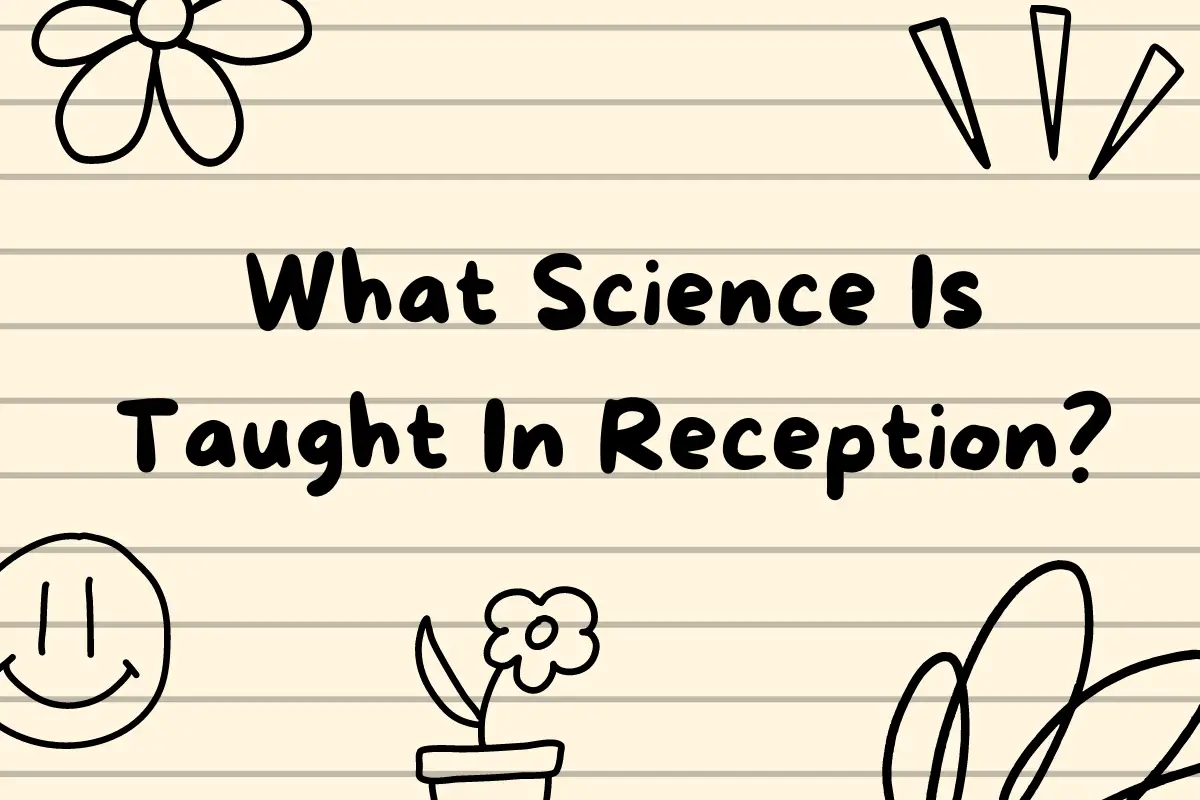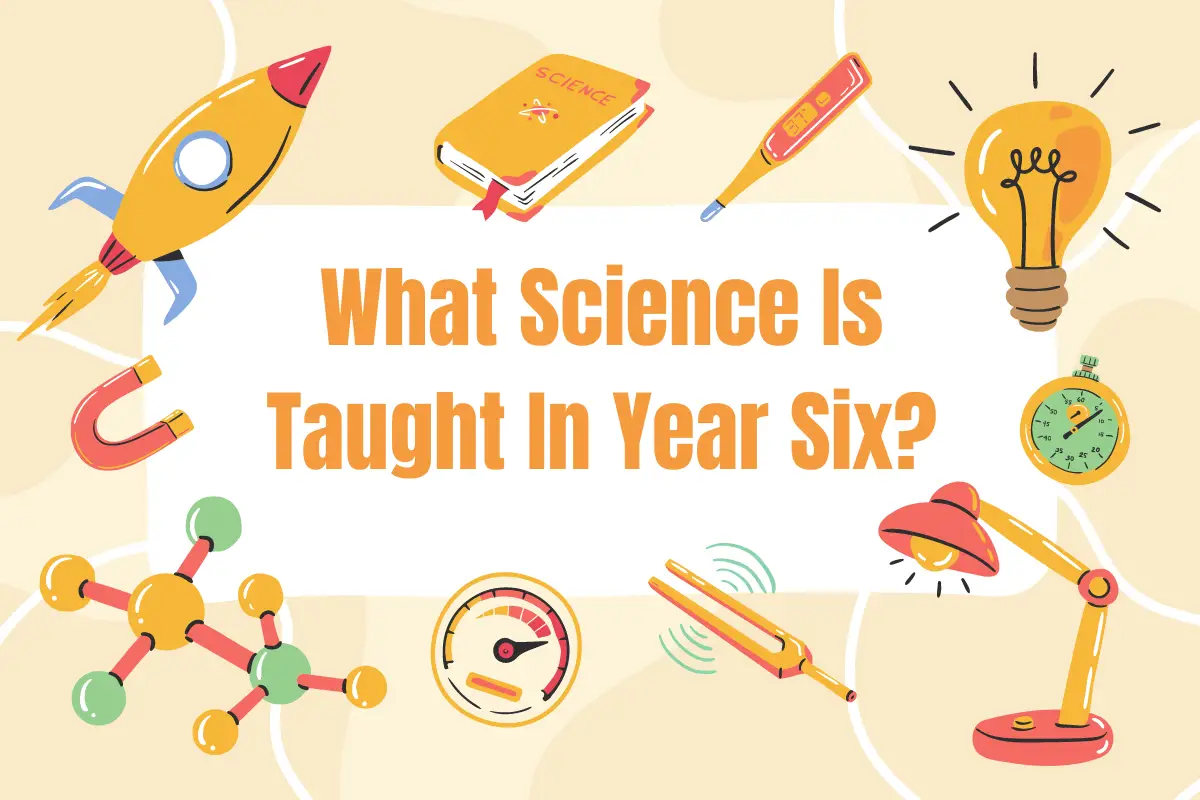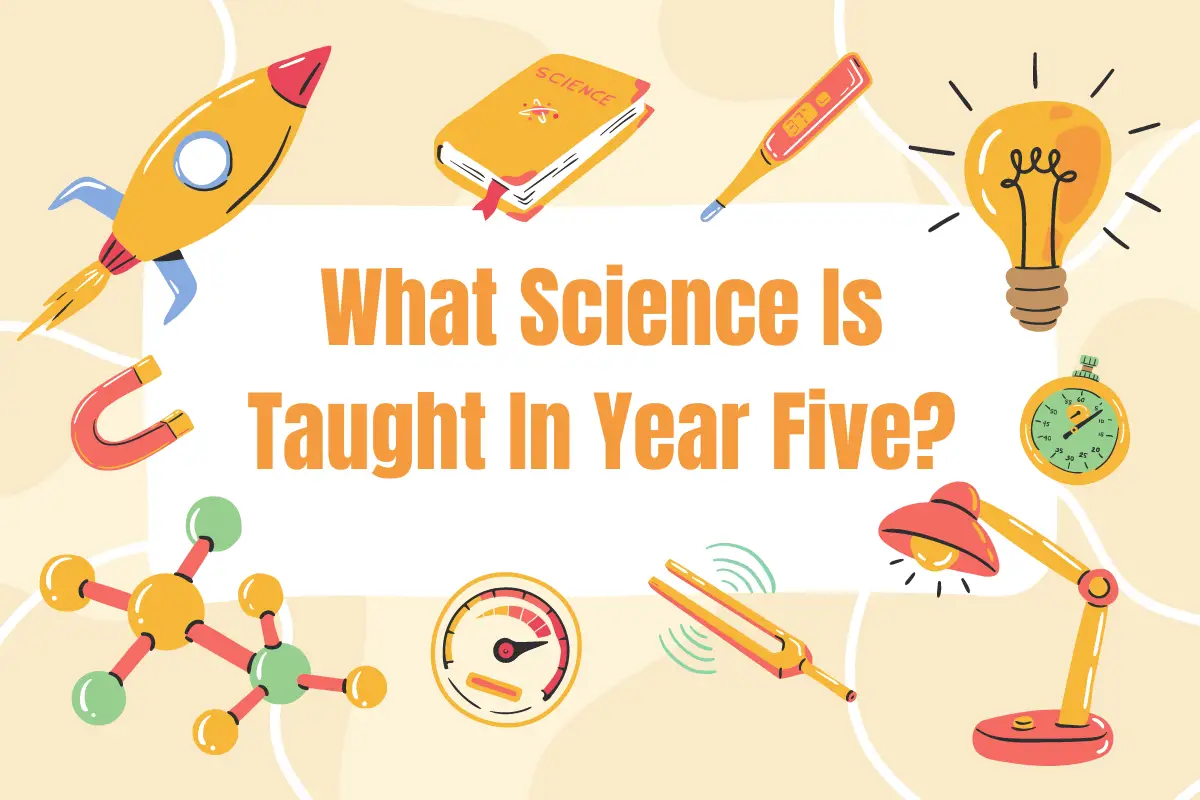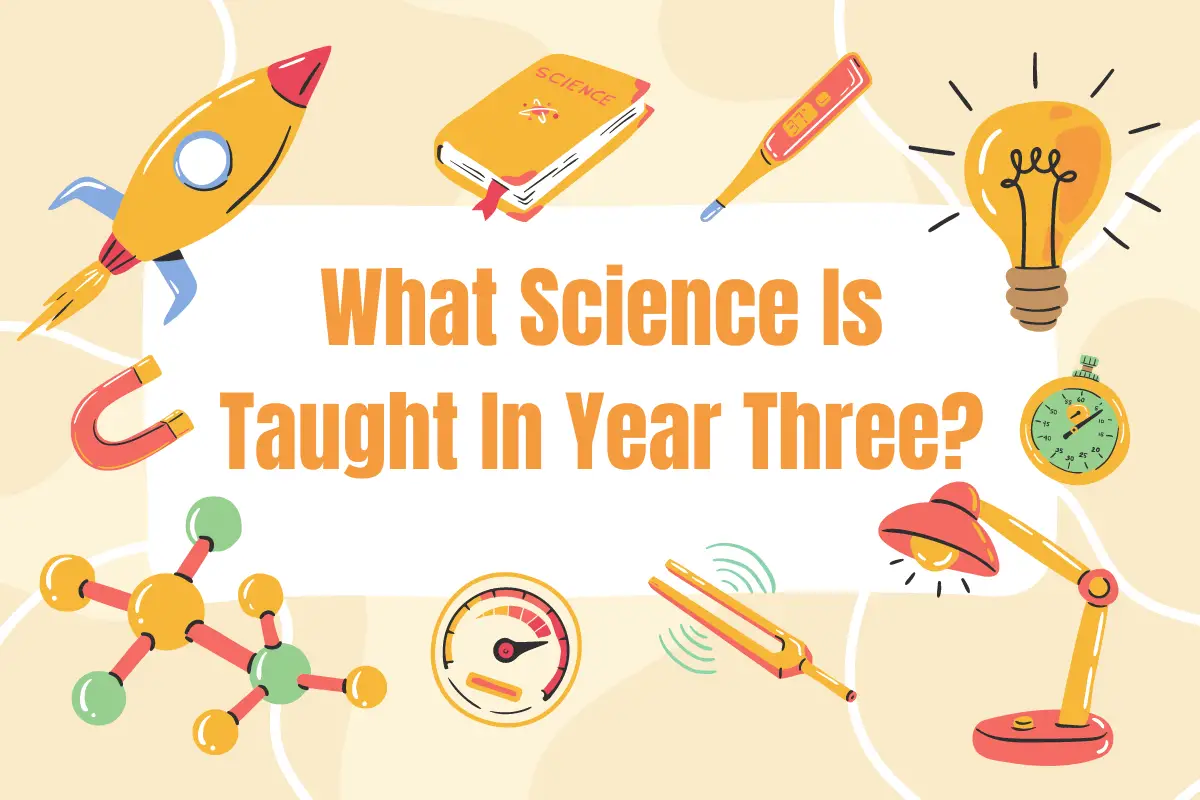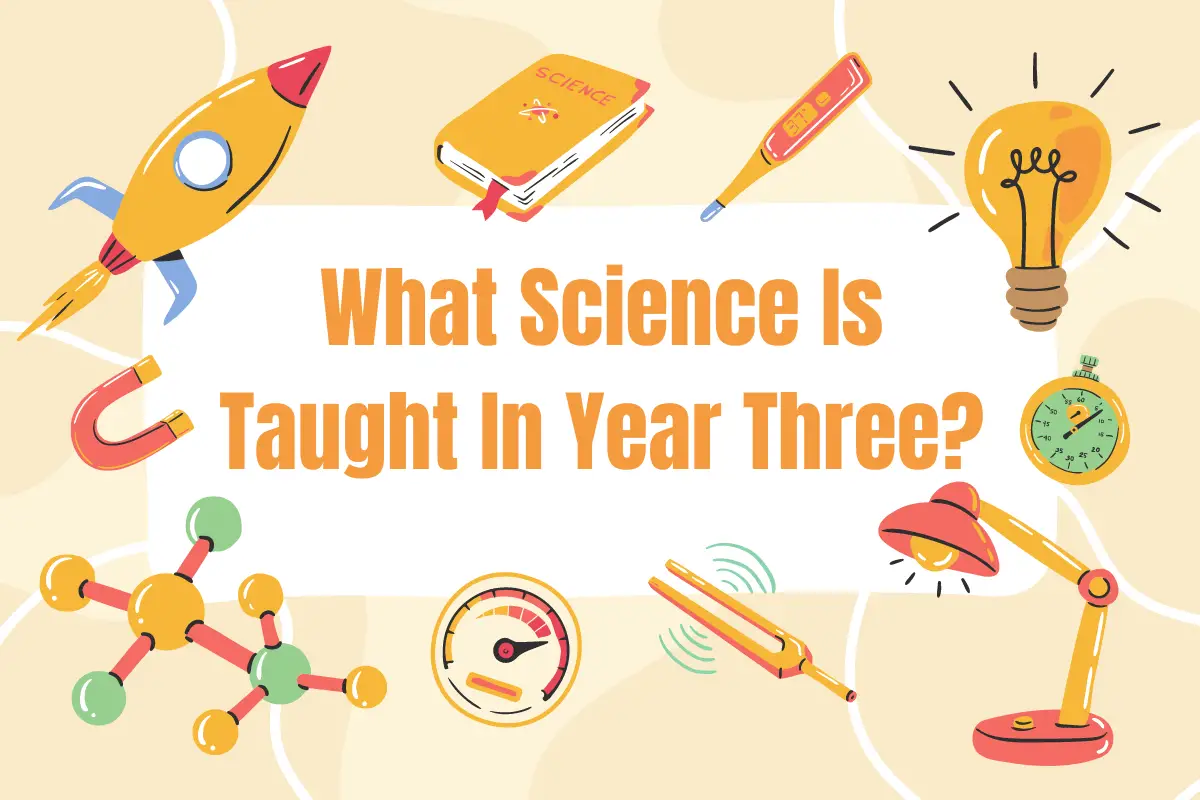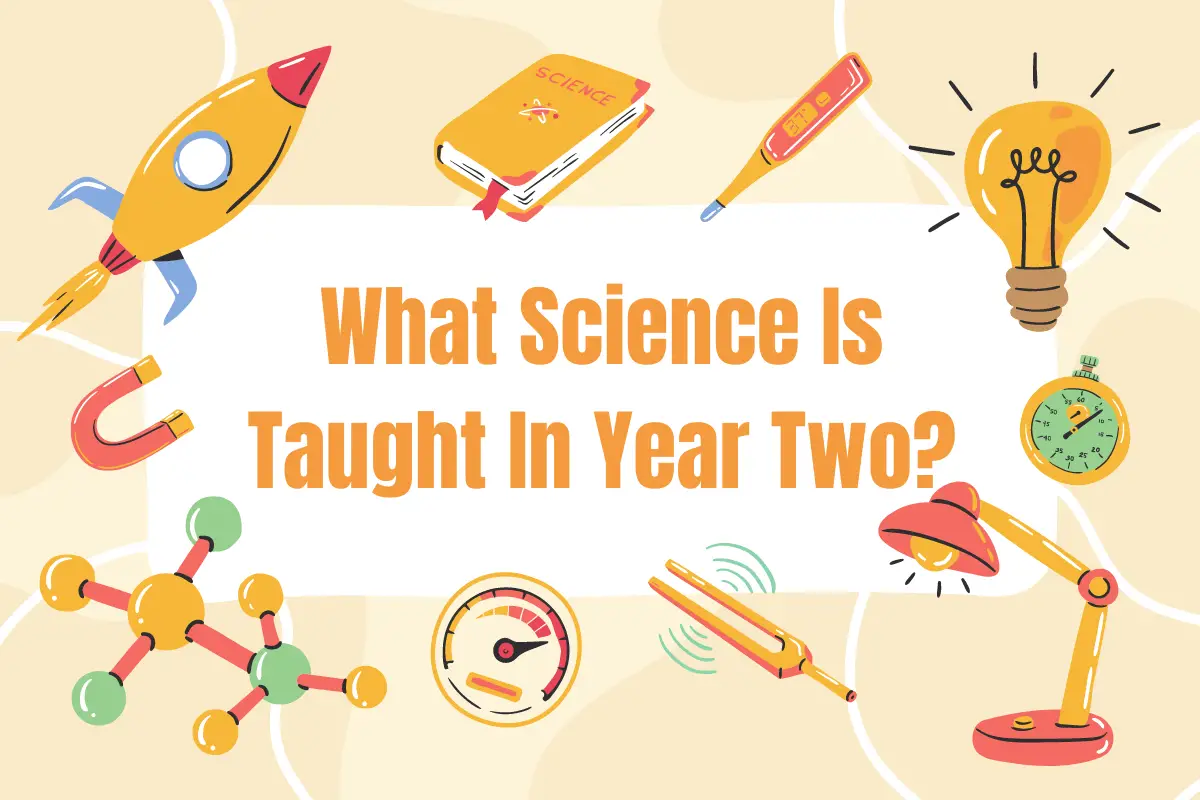Are you the parent of a second grader, or considering enrolling your child in a second grade classroom this school year? If so, then it is essential to understand what science topics will be taught in this grade level.
Knowing what science will be studied gives insights into both how teachers approach quizzes and tests for their students as well as helping parents guide class room conversations and find additional resources that can reinforce what is being taught in the classroom. In this blog post, we’ll explore all of the details related to Science education during second grade!
Introducing the Scientific Process
The scientific process is a powerful tool that helps us understand the world around us. By introducing the scientific process to second graders, we can encourage curiosity, critical thinking, and problem-solving skills.
What is the Scientific Process?
The scientific process is a series of steps scientists use to answer questions and solve problems. These steps help ensure that the findings are accurate and reliable. The basic steps of the scientific process include:
- Ask a question: Identify a problem or question that needs to be answered.
- Research: Gather information about the topic from various sources (books, articles, experts, etc.).
- Form a hypothesis: Make a prediction or educated guess about the outcome.
- Design and experiment: Create a test to see if the hypothesis is correct.
- Observe and collect data: Record the results of the experiment.
- Analyze the data: Determine if the results support or refute the hypothesis.
- Draw conclusions: Summarize the findings and determine the implications.
- Communicate results: Share your findings with others.
Introducing the Scientific Process to Second Graders
Teachers can use age-appropriate language and examples to introduce the scientific process to second graders. Here are some tips for teaching the scientific process to young learners:
- Use simple, clear language to explain each step of the scientific process.
- Provide real-life examples of each step to make it more relatable.
- Encourage students to ask questions and make observations about their surroundings.
- Use hands-on activities and experiments to engage students and help them understand the concepts better.
Creating Simple Experiments
One of the best ways to teach the scientific process is by having students create and conduct their own experiments. Here are some ideas for simple experiments suitable for second graders:
1. Plant Growth Experiment
- Question: How does sunlight affect the growth of a plant?
- Hypothesis: Plants that receive more sunlight will grow taller than plants that receive less sunlight.
- Experiment: Plant several seeds in identical pots with the same type of soil. Place some pots in a sunny area and others in a shaded area. Water the plants regularly and measure their growth over time.
- Data and Analysis: Record the height of each plant at regular intervals. Compare the growth of the plants in the sunny area to those in the shaded area.
- Conclusion: Determine if the hypothesis was correct and discuss the importance of sunlight for plant growth.
2. Ice Melting Experiment
- Question: How does the color of an object affect how quickly ice melts on it?
- Hypothesis: Ice will melt faster on a dark-colored object than on a light-colored object.
- Experiment: Place equal-sized ice cubes on identical objects with different colors (e.g., black and white paper plates). Observe and record the time it takes for the ice to melt on each object.
- Data and Analysis: Compare the melting times for the ice on the different colored objects.
- Conclusion: Determine if the hypothesis was correct and discuss how color can affect heat absorption.
Introducing the scientific process to second graders is essential in fostering a love for learning and curiosity about the world. By using age-appropriate language, examples, and engaging hands-on experiments, teachers can help young learners grasp the scientific process and encourage them to think critically and solve problems using evidence-based methods.
Measuring and Estimating
In second grade, students start learning essential skills related to measuring and estimating. These skills help them understand the size, length, and weight of objects and how to compare and evaluate the measurements of different things.
What is Measuring?
Measuring is the process of finding the size, length, or amount of something using a standard unit. For example, we can measure the length of a pencil in inches or centimeters, or the weight of an apple in ounces or grams. In second grade, students typically learn about basic measuring units such as inches, feet, centimeters, meters, ounces, and grams.
What is Estimating?
Estimating is the process of making an educated guess about the measurement of an object without actually measuring it. This skill helps us make quick decisions and solve problems in everyday life. For example, if we need to know if a book will fit on a shelf, we can estimate its size by looking at it and comparing it to other objects we are familiar with.
Measuring Length
In second grade, students learn to measure the length of objects using rulers, yardsticks, and tape measures. They practice using both customary (inches and feet) and metric (centimeters and meters) units. Here are some activities that can help students practice measuring length:
- Measuring Everyday Objects: Give students a ruler or tape measure and ask them to measure the length of various objects around the classroom, such as books, pencils, and desks.
- Comparing Lengths: Ask students to find two objects of different lengths and measure them. Then, have them compare the lengths and decide which object is longer or shorter.
Measuring Weight
Second-grade students also learn about measuring the weight of objects using scales. They practice using both customary (ounces and pounds) and metric (grams and kilograms) units. Here are some activities to help students practice measuring weight:
- Weighing Objects: Provide students with a scale and a variety of objects to weigh, such as fruit, toys, or books. Have them record each object’s weight in customary and metric units.
- Comparing Weights: Ask students to find two objects with different weights and weigh them. Then, have them compare the weights and decide which object is heavier or lighter.
Estimating Measurements
As students become more familiar with measuring, they can start practicing estimation skills. Here are some activities to help students practice estimating measurements:
- Estimating Length: Show students an object and ask them to estimate its length in inches or centimeters. Then, have them measure the object to see how close their estimate was.
- Estimating Weight: Show students an object and ask them to estimate its weight in ounces or grams. Then, have them weigh the object to see how close their estimate was.
Measuring and estimating are essential skills that help students understand the world around them. By practicing these skills in second grade, students will develop a strong foundation for future math and science learning. With hands-on activities and real-world examples, students can become confident in their ability to measure and estimate various objects’ size, length, and weight.
Exploring Life Science
Life science is a fascinating subject that helps children understand the world around them. In second grade, students begin to explore living things, their characteristics, behaviors, and needs. This stage of learning is crucial for building a strong foundation in biology and fostering an appreciation for the natural world.
Introducing Living Things
At the beginning of second grade, teachers can introduce the concept of living things to students by discussing the differences between living and non-living objects. They can use examples from the students’ everyday lives, such as plants, animals, and people, to explain what makes something alive.
Characteristics of Living Things
Once students understand the basic concept of living things, they can begin to learn about their characteristics. Teachers can explain that all living things:
- Grow and develop
- Reproduce
- Respond to their environment
- Use energy
- Adapt to their surroundings
By using real-life examples and hands-on activities, teachers can help students grasp these characteristics and see how they apply to different living organisms.
Animal and Plant Behaviors
In second grade, students can also start learning about the behaviors of animals and plants. For animals, this may include topics like migration, hibernation, and camouflage. Teachers can engage students in discussions and activities that demonstrate these behaviors and help them understand why animals exhibit them.
Students can learn about processes like photosynthesis, pollination, and seed dispersal for plants. By observing plants in their natural environment or growing plants in the classroom, students can witness these behaviors firsthand and gain a deeper understanding of plant life.
Needs of Living Things
Another important aspect of life science in second grade is understanding the needs of living things. Teachers can explain that all living organisms require certain basic essentials to survive, such as:
- Food
- Water
- Air (oxygen for animals and carbon dioxide for plants)
- Shelter
- Space
Through discussions and activities, students can explore how different living things meet these needs and how their environments are crucial to their survival.
Integrating Life Science into Other Subjects
Life science can also be integrated into other subjects, such as reading, writing, and art. Teachers can encourage students to read books about animals and plants, write stories or poems inspired by nature, or create artwork depicting various living organisms and their
Investigating Physical Science
Teaching physical science to second graders presents a unique opportunity to instill a sense of wonder and curiosity about the world around them. At this age, students are ready to explore the physical properties of matter and various energy sources. By introducing these concepts through hands-on activities and experiments, educators can help young learners develop a strong foundation in science.
Understanding Physical Properties of Matter
Matter is anything that takes up space and has mass. It is made up of tiny particles called atoms. In second grade, students learn about the three basic states of matter: solids, liquids, and gases. They explore how these states have different physical properties, such as shape, volume, and the ability to flow.
Hands-On Activities for Teaching States of Matter
- Ice Melting Experiment: Provide students with ice cubes and ask them to observe the changes as the ice melts into water. This activity helps students understand the transition from solid to liquid.
- Balloon Gas Experiment: Blow up a balloon and let it deflate, demonstrating how air (a gas) fills the balloon and takes up space.
- Making Oobleck: Create a non-Newtonian fluid using cornstarch and water, which behaves like both a solid and a liquid. Students can touch and play with the oobleck to experience its unique properties.
Exploring Energy Sources
Energy is the ability to do work or cause change. In second grade, students learn about different types of energy sources, including light, heat, sound, and electricity. They explore how these energy sources can be used to power various objects and machines.
Hands-On Activities for Teaching Energy Sources
- Solar Energy: Place a thermometer under direct sunlight and another in the shade. Students can compare the temperature readings, illustrating the concept of solar energy and how it can heat objects.
- Sound Energy: Use a tuning fork or musical instrument to demonstrate sound waves and vibrations. Students can feel the vibrations on their fingertips, helping them understand how sound energy travels through the air.
- Electricity: Build a simple circuit using a battery, wires, and a light bulb. This activity demonstrates how electrical energy can flow through a closed circuit to power a light bulb.
- Wind Energy: Set up a small fan and place different objects in front of it, such as feathers, cotton balls, and paperclips. Students can observe how wind energy can move objects, demonstrating its potential as an alternative energy source.
By engaging second-grade students in hands-on activities and experiments, educators can help them develop a strong understanding of physical properties of matter and various energy sources. These lessons will foster a love for science and lay the foundation for more advanced scientific concepts in the future.
Exploring Earth Science
Earth Science is a fascinating subject that helps us understand the world around us. In second grade, students begin to explore various aspects of Earth Science, including earth materials, weather, landforms, rocks, oceans, stars, and planets. Let’s dive into these exciting topics!
Earth Materials
Second graders learn about earth materials like soil, sand, and clay. They’ll discover how these materials are formed and their importance in supporting plant life. Students will also explore the concept of natural resources and how we use them daily.
Weather
Weather plays a significant role in our lives, and second graders will start learning about different weather elements like temperature, precipitation, and wind. They’ll also study weather patterns, seasons, and how to read simple weather maps. This knowledge helps students appreciate the changes in weather and how it affects our environment.
Landforms
In Earth Science, second graders will explore various landforms such as mountains, valleys, plains, and deserts. They’ll learn how these landforms are created through erosion, weathering, and deposition. By understanding these processes, students can appreciate the beauty and diversity of our planet’s landscapes.
Rocks
Rocks are an essential part of Earth Science, and second graders will learn about the three main types of rocks: igneous, sedimentary, and metamorphic. They’ll discover how each type of rock is formed and the unique characteristics that set them apart. Students may also have the opportunity to examine different rock samples and learn about the rock cycle.
Oceans
Oceans cover more than 70% of Earth’s surface, and second graders will learn about their importance in supporting life on our planet. They’ll explore ocean zones, marine habitats, and the various creatures that call the ocean home. Students will also learn about the water cycle and how oceans play a crucial role in maintaining Earth’s climate.
Stars and Planets
Second graders will embark on a journey through our solar system, learning about the sun, moon, stars, and planets. They’ll discover fascinating facts about each celestial body and how they interact with one another. Students will also learn about constellations and how ancient cultures used them for navigation and storytelling.
Using Math in Science
Math and science are two subjects that go hand-in-hand, particularly when it comes to understanding complex concepts. Using math in science can help second graders better grasp scientific ideas and develop their problem-solving skills. Two key ways math can be used in science for this age group are graphing data and constructing models.
Graphing Data
Graphing is a powerful tool that allows students to visualize and analyze data collected during experiments or observations. In second grade, students can start learning about simple graphs, such as bar graphs and pictographs. These types of graphs can help them understand patterns and trends in the data, making it easier to conclude the scientific concept being studied.
Steps for creating a simple bar graph:
- Collect data: Have students collect data from an experiment or observation. For example, they can observe and record the number of different colored flowers in a garden or the number of students who prefer different types of fruit.
- Organize the data: Help students organize the data into categories, such as types of flowers or types of fruit.
- Create the graph: Draw a simple bar graph on a piece of paper or whiteboard, with one axis representing the categories and the other axis representing the number of items in each category. Have students place a bar above each category to represent the number of items in that category.
- Analyze the graph: Discuss the graph with the students, asking questions like “Which category has the most items?” or “What patterns do you notice in the graph?” This will help them develop their analytical skills and better understand the science concept being studied.
Constructing Models
Constructing models is another way for second graders to use math in science. A model is a representation of a real-world object or concept that helps students understand how it works. For example, a solar system model can help students visualize the relative positions and movements of the planets.
Steps for constructing a simple model:
- Introduce the concept: Explain the scientific concept that the model will represent. For example, discuss the solar system and the planets’ positions and movements.
- Gather materials: Collect materials that can be used to create the model, such as clay, paper, or craft supplies.
- Plan the model: Help students plan out their model, discussing the size and shape of each component and how they will represent the concept. Encourage them to use math skills, such as measuring and comparing sizes, to ensure accuracy in their model.
- Construct the model: Guide students as they build their model, providing assistance and encouragement as needed.
- Discuss the model: Once the model is complete, discuss how it represents the scientific concept and any limitations or inaccuracies in the model. This will help students develop critical thinking skills and a deeper understanding of the science concept.
Second-grade students can develop a strong foundation in both subjects by incorporating math into science lessons through graphing data and constructing models. This integration helps them understand scientific concepts better and fosters problem-solving and critical thinking skills that will benefit them throughout their education and beyond.
The second grade science curriculum encompasses a diverse range of topics. From the geology and biology of nature to physics and with a smattering of chemistry, students are exposed to many different fields. With its focus on developing inquiry and problem-solving skills, these alternatives provide children with a foundation for further study.
More importantly, they create an enthusiasm for science – a subject that will continue throughout elementary, high school, and college. Furthermore, this education follows in the footsteps of those scientists who have already discovered much about our world – from Galileo Galilei to modern day researchers. To stay up-to-date on what activities today’s students are learning about, be sure to read our other articles!
FAQ
1. What topics are covered in second grade science?
In second grade science, students typically learn about life cycles, habitats, weather, states of matter, and basic earth science concepts. The curriculum may vary depending on the school or region.
2. How can I support my child’s learning in second grade science?
You can support your child’s learning by providing them with opportunities to explore their environment, engaging them in hands-on activities, and discussing scientific concepts with them. Encourage them to ask questions, make observations, and draw conclusions based on their experiences.
3. What types of experiments can my child do at home?
Some simple experiments for second graders include growing seeds, observing the water cycle in a jar, making a volcano, and exploring the properties of different materials. Always supervise your child during experiments and ensure they follow safety guidelines.
4. How can I help my child understand complex scientific concepts?
Break down complex concepts into smaller, more manageable parts. Use everyday examples and analogies to explain the concepts, and engage your child in discussions to gauge their understanding.

